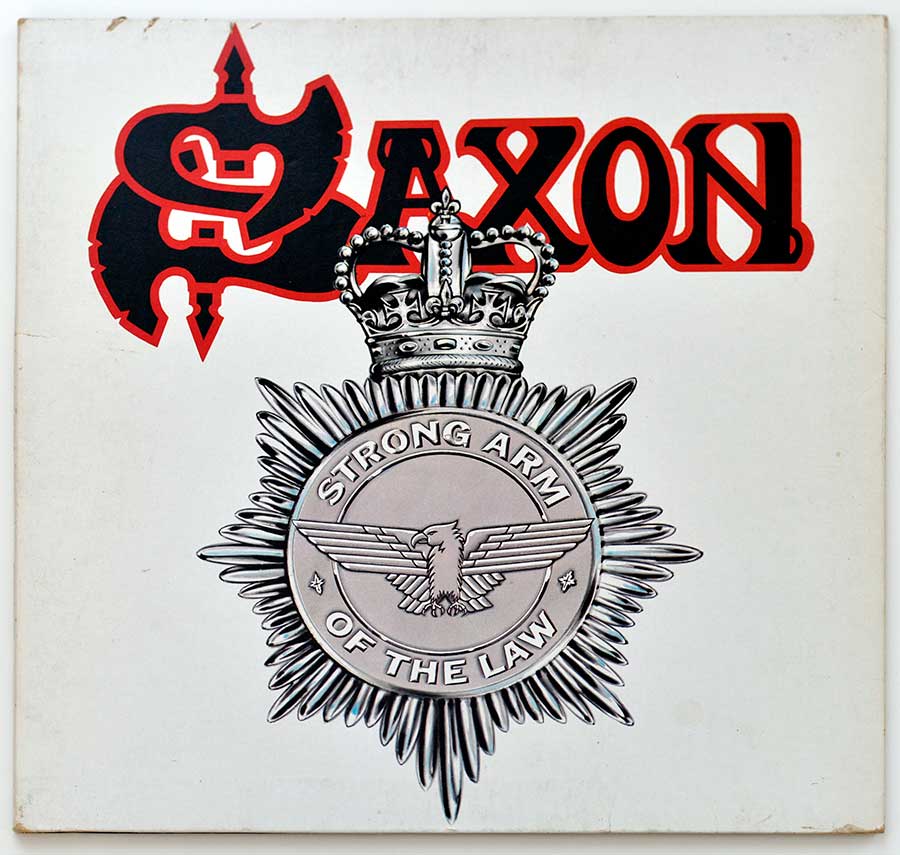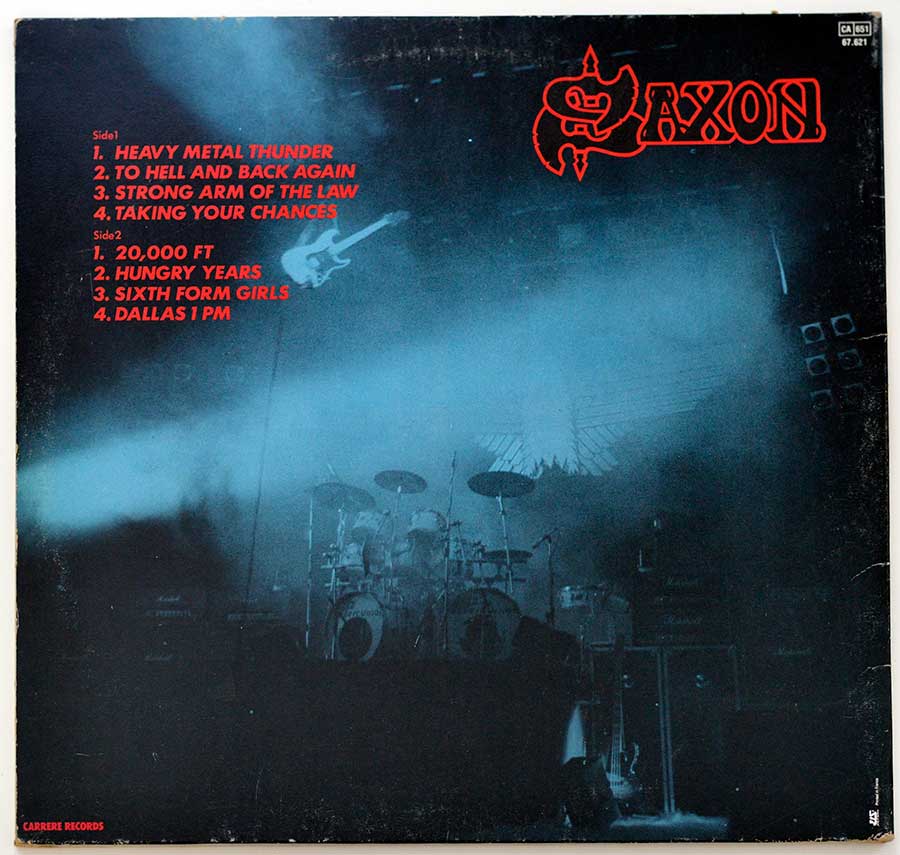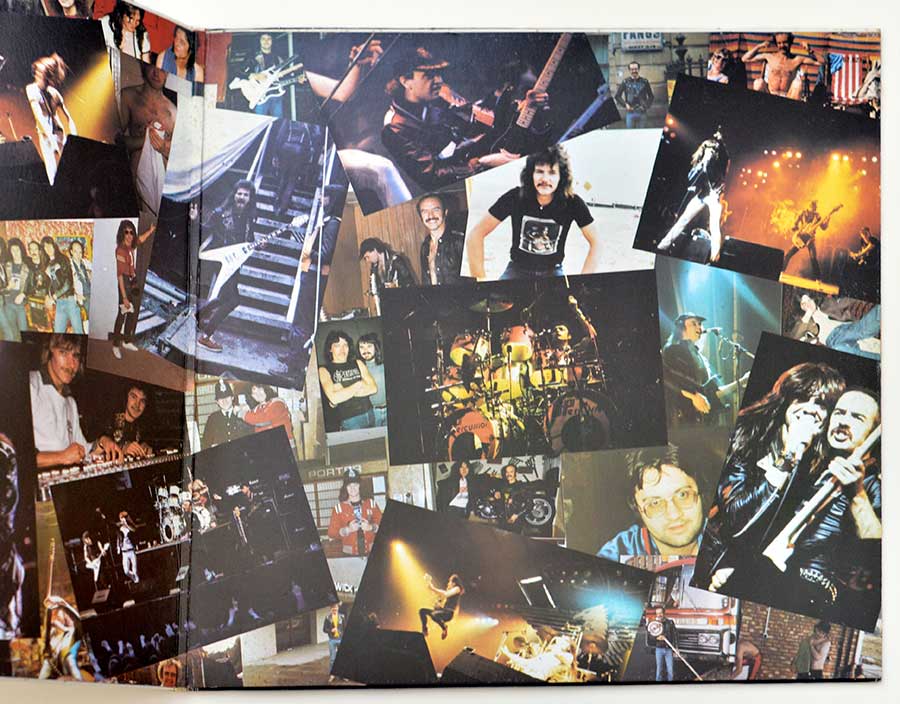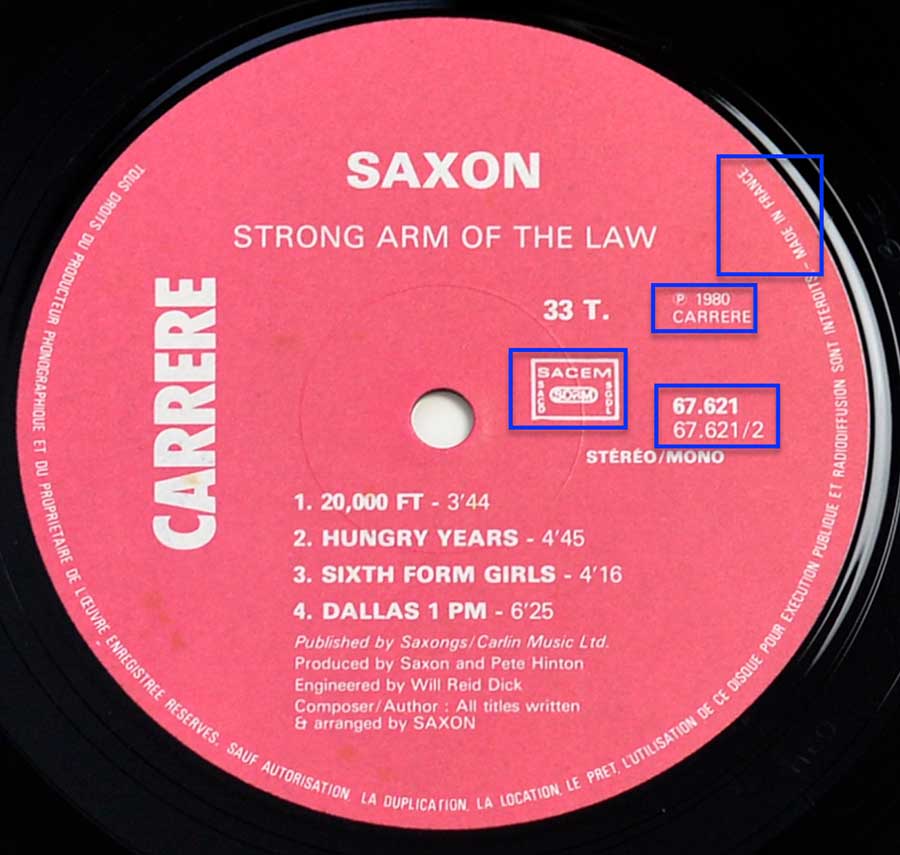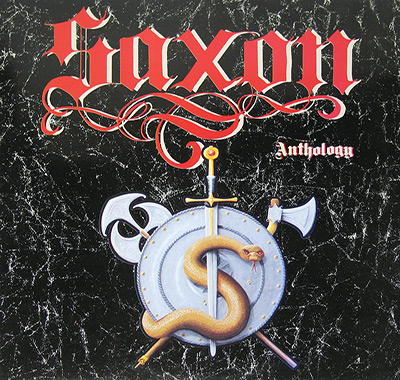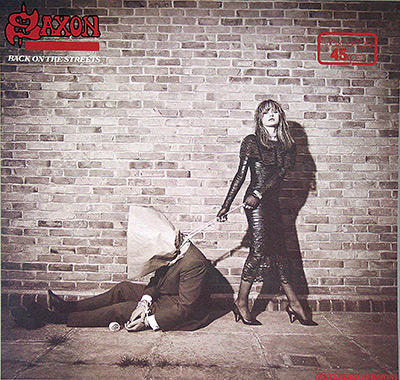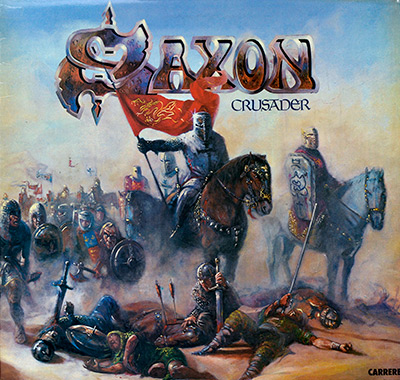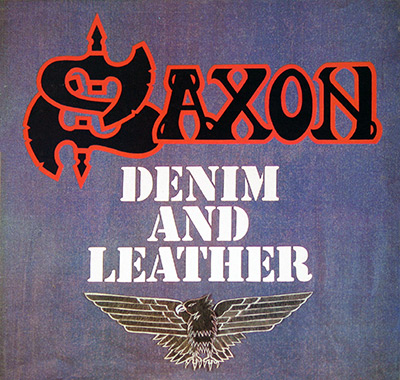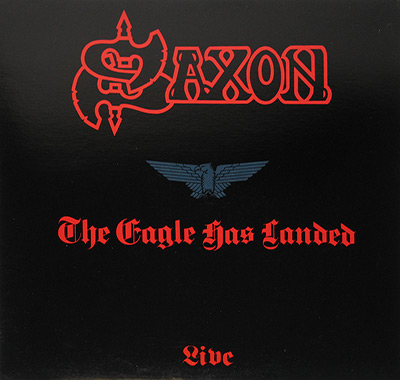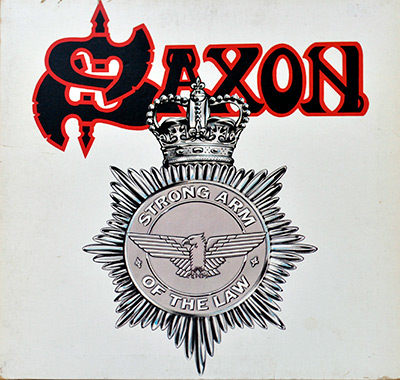"Strong Arm of the Law" Album Description:
In the vibrant landscape of the early 1980s, where the echoes of heavy metal reverberated across continents, Saxon emerged as a formidable force with their third studio album, "Strong Arm of the Law." This particular release, encapsulated in a 12" vinyl LP format, bears the distinct imprint of France through its association with Carrere Records. Let us delve into the essence of this iconic album, exploring both its time period and the production that defined its musical legacy.
Time Period:
The year 1980 marked a crucial juncture in the evolution of heavy metal. It was a time when the genre was transitioning from its pioneering days in the 1970s to a more defined and expansive sound. Bands were pushing boundaries, and the metal community was witnessing the rise of sub-genres and regional variations. Saxon, hailing from the United Kingdom, stood at the forefront of this transformative era.
The early 1980s was a time of dynamic change in the music industry, characterized by the advent of new technologies and an increasing globalization of musical influences. The era witnessed the birth of the New Wave of British Heavy Metal (NWOBHM), a movement that breathed fresh life into the metal scene. Saxon, with their raw energy and unapologetic sound, became torchbearers of this movement, and "Strong Arm of the Law" epitomized the spirit of the time.
Production:
The French release of "Strong Arm of the Law" on Carrere Records added a distinct flavor to the album's production. Carrere Records, a prominent French record label, played a crucial role in bringing diverse musical genres to the forefront of the French music scene. The label's association with Saxon on this release facilitated the band's reach into the French market, contributing to their international acclaim.
The production of the album itself reflected the craftsmanship of the band and the collaborative efforts with the recording and engineering teams. Saxon, known for their powerful guitar riffs, anthemic vocals, and driving rhythms, found an ideal platform in "Strong Arm of the Law" to showcase their musical prowess. The album's sonic landscape was carefully sculpted to capture the raw intensity of their live performances while maintaining a polished studio quality.
The choice of the 12" vinyl LP format for this release adds a layer of nostalgia, as vinyl records were the primary medium for music consumption during this era. The larger canvas provided by the 12" format allowed for intricate album art and conveyed a sense of ceremony when playing the record. The analog warmth of vinyl contributed to the overall listening experience, enhancing the impact of Saxon's powerful compositions.
